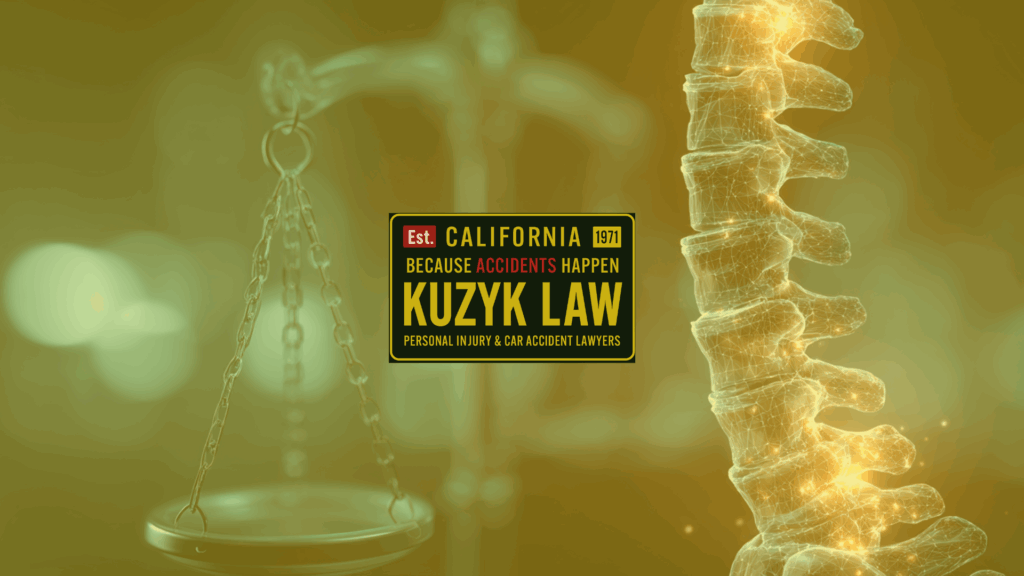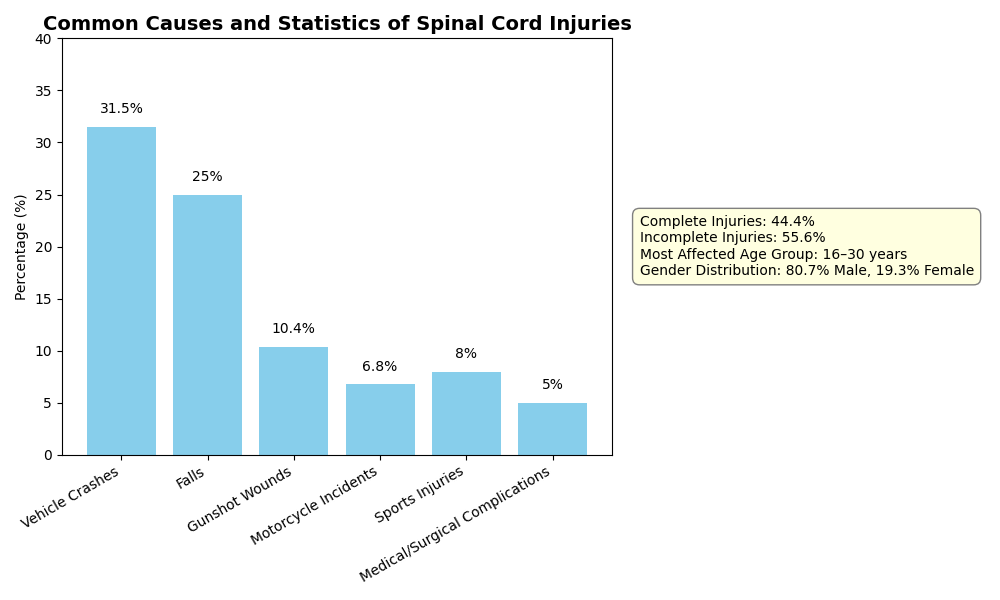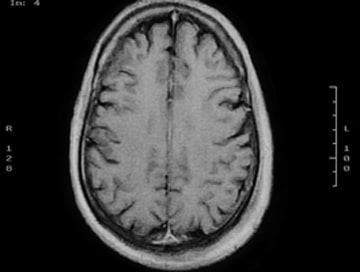A spinal cord injury can change almost everything about your life, from your well-being to your autonomy and finances. At times like this, the right legal help isn’t just beneficial—it’s essential. Don’t let your options overwhelm you. With a Fresno spinal injury lawyer at your side, your next steps will be clear, focused, and on your best path toward recovery and your future.
At Kuzyk Law, we know that each and every case has its story. That’s why we treat each client with a strategy that reflects the details that are most important.
This is not just about compensation; it’s about trying to claw back toward equilibrium after things have shifted so much. And although no legal remedy can reverse what has been lost, it can offer a way to reconstruct what comes next.

Do I need a Spinal Cord Injury Lawyer in Fresno?
You’re not legally required to hire a spinal cord injury lawyer in Fresno, but trying to go it alone can be risky. These cases are complex, and the stakes are high. Without expert guidance, numerous aspects such as medical evaluations, financial projections, and the investigation itself may be overlooked.
Some people choose to handle the legal process on their own, thinking it might save money. But when a spinal cord injury is involved, that choice can end up being much more expensive in the long run. These injuries often come with lifelong costs—surgeries, therapy, mobility aids, home adjustments, and a reduced ability to work.
In situations like this, having someone who knows how to calculate what you’ll truly need makes a real difference. It’s not just about compensation—it’s about making sure nothing essential is left out.
Another important factor is legal deadlines and court procedures, as in personal injury cases there is very little room for error. Missing a filing date or overlooking a procedural step—even unintentionally—can put your entire case at risk. That’s why having an attorney matters. A skilled lawyer keeps track of every requirement, handles the paperwork, and steps in to represent you in court if it comes to that.
What Is a Spinal Cord Injury?
The spinal cord is a key structure of the central nervous system that transmits signals between the brain and the body. When it is injured, even partially, it can alter essential functions such as movement, sensation, sphincter control, or breathing. These injuries can be complete—when all function is lost below the affected point—or incomplete, if some sensation or mobility remains.
The consequences of a spinal cord injury are not limited to the physical level. They can also have a profound emotional, social, and economic impact. Many people face ongoing expenses for rehabilitation, assistive equipment, home adaptations, and loss of income. Therefore, in the legal context, it’s critical that any claim address not only the immediate damages but also the long-term needs that this type of injury entails.
Common Causes of Spinal Cord Injuries

According to a study published on PubMed Central from the journal Spinal Cord Injury Rehabilitation, vehicle crashes represent the most common cause for spinal cord trauma, with a 31.5%. Other common causes include gunshot wounds, representing 10.4% and motorcycle incidents, being 6.8%.
Additional causes include:
- Falls, particularly among older adults.
- Sports and recreational activities, such as diving accidents or contact sports.
- Medical or surgical complications, although less common, can still result in severe spinal damage.
How Spinal Cord Injuries Are Diagnosed
Spinal cord injuries are among the most devastating and life-changing conditions a person can experience. Getting a clear and accurate diagnosis isn’t just about medical care—it’s also a critical step in building a strong legal case.
The process usually begins with a hands-on evaluation, where doctors check the patient’s ability to move, feel, and respond to touch. These early assessments help determine how much of the body is affected and how severe the damage might be. One of the most widely used tools at this stage is the ASIA Impairment Scale, which helps classify the injury based on how much function remains below the point of trauma.
To fully understand the extent of the injury, imaging tests are often required. MRIs are especially helpful for identifying soft tissue damage, spinal cord compression, or internal bleeding. CT scans and X-rays are also used—particularly in emergency settings—to detect fractures or dislocations. These tests guide treatment decisions and provide key evidence when pursuing a legal claim.
In legal terms, the diagnosis carries significant weight. It helps establish how serious the injury is, which directly influences the potential value of a claim. For instance, a complete spinal cord injury that results in permanent paralysis will generally lead to higher compensation than a partial or temporary injury. The diagnosis also helps prove that the injury was directly caused by the incident—whether it was a car crash, a fall, or another traumatic event.
Beyond proving the injury, the diagnosis helps estimate damages. Attorneys and medical experts use it to calculate both current and future costs, including:
- Medical care (surgeries, rehab, medications)
- Assistive equipment and home modifications
- Lost income and reduced earning potential
- Physical pain, emotional distress, and loss of quality of life
A well-documented diagnosis also strengthens expert testimony. When medical professionals explain the long-term effects of the injury in court, it helps juries grasp the full impact on the victim’s life.
Common Consequences of Spinal Cord Injuries
Spinal cord injuries (SCIs) often result in life-altering consequences that go far beyond the initial trauma. For legal professionals and injury victims alike, understanding these consequences is essential to building a strong case and securing fair compensation. Below are some of the most common outcomes of SCIs and how they factor into legal claims.
1. Paralysis and Loss of Mobility
Paralysis is one of the most devastating outcomes of an SCI. Depending on the location and severity of the injury, victims may experience:
- Paraplegia: Loss of movement and sensation in the lower body.
- Tetraplegia (Quadriplegia): Loss of function in all four limbs and the torso.
These conditions often require lifelong care, assistive devices, and home modifications—all of which significantly increase the value of a legal claim.
2. Sensory Loss and Chronic Pain
Many SCI victims lose the ability to feel touch, temperature, or pain below the injury site. Others suffer from neuropathic pain, which can be constant and debilitating. These symptoms are difficult to treat and often lead to long-term suffering.
3. Bowel and Bladder Dysfunction
Loss of control over bowel and bladder function is common and can be both physically and emotionally distressing. Victims may require:
- Catheters or colostomy bags
- Scheduled bowel programs
- Ongoing medical supervision
These needs contribute to both economic (medical costs) and non-economic damages (loss of dignity and independence).
4. Respiratory Complications
Injuries to the cervical spine can cause difficult breathing, sometimes requiring ventilator support. This not only increases medical expenses but also affects life expectancy and quality of life—critical elements in wrongful death or catastrophic injury claims.
9. Sexual Dysfunction and Fertility Issues
SCI can affect sexual function and fertility, particularly in men. These deeply personal consequences are often included in claims for emotional distress and loss of consortium.
10. Psychological and Emotional Trauma
Depression, anxiety, PTSD, and social isolation are common among SCI survivors. Mental health treatment is often necessary and should be included in any comprehensive damages assessment.
What Damages Can I Recover in A Spinal Cord Injury Lawsuit?
In the United States, the average compensation for a spinal cord injury is around $700,000, although this number can vary widely depending on several factors:
Severity of injury:
Catastrophic injuries resulting in paralysis or permanent loss of function can reach compensation of millions of dollars.
Medical prognosis:
If recovery is limited or non-existent, the value of the case tends to increase.
Current and future medical expenses:
Includes hospitalization, surgeries, rehabilitation, medications, and home adaptations.
Loss of income:
Both lost wages and future earning capacity are taken into consideration to determine a settlement.
Pain and suffering:
The emotional, psychological, and social impacts of the injury are assessed.
Negotiation with insurance companies:
Insurance companies often initially offer low amounts, so having a specialized attorney can make a significant difference.
What You Can Expect from a Spinal Cord Injury Attorney in Fresno?
Building a Strong and Thorough Case
At Kuzyk Personal Injury & Car Accident Lawyers, every spinal cord injury case is approached with care and precision. The process begins with a detailed investigation—reviewing medical records, accident reports, and witness statements to build a solid foundation for your claim.
To strengthen your case, we bring in trusted professionals such as physicians, accident reconstruction experts, and other specialists. Their insights help us present a clear, compelling account of what happened and how it has affected your life.
Managing Insurance Company Challenges
Dealing with insurers after a spinal cord injury can be frustrating and overwhelming. Many try to reduce payouts or shift responsibility to avoid covering the full cost of your recovery. That’s why our legal team steps in early—to take over all communication, protect your rights, and ensure your claim is backed by solid, well-organized evidence.
Support Beyond the Legal Process
A spinal cord injury affects more than just your physical health—it touches every part of your life. Beyond legal representation, our team helps connect clients with medical providers, rehabilitation specialists, and support resources to assist with recovery and day-to-day adjustments.
Free Initial Consultation
You deserve clarity from the start. That’s why we offer a free initial consultation to review your case, explain your legal options, and help you take the first step toward recovery and justice—with no pressure and no obligation.
Proving Negligence with the Help of a SCI Lawyer in California
When pursuing compensation for a spinal cord injury, one of the most critical legal elements is proving negligence. In California, this means showing that another party’s careless or reckless actions directly caused your injury.
There are four elements to consider:
1. Duty of Care
The responsible party (e.g., a contractor, equipment manufacturer, or property owner) had a legal obligation to ensure a safe working environment.
2. Breach of Duty
That party failed to uphold their duty by acting carelessly or violating safety standards.
3. Causation
The breach directly caused your spinal cord injury. Your lawyer must show a clear link between the unsafe condition and your accident.
4. Damages
You suffered measurable harm—physical, emotional, and financial—as a result of the injury.
In these cases, your lawyer will:
- Collect evidence (incident reports, safety violations, expert testimony)
- Prove the connection between the breach and your injury
- Quantify your damages for maximum compensation
- Navigate California’s comparative fault laws to protect your rights
Work with the Fresno Spinal Cord Injury Lawyers at Kuzyk Personal Injury & Car Accident Lawyers Today
For more than five decades we have helped clients recover the compensation they deserve after life-changing accidents. We understand the long-term impact of spinal cord injuries and are committed to securing the benefits you need for ongoing medical care, rehabilitation, and daily living support.
Call us today or reach out online for a free consultation. Our experienced and compassionate legal team is available 24/7, 365 days a year, ready to fight for your rights while you focus on healing.
Fresno Spinal Cord Injury Lawyer – Frequently Asked Questions
What if I was partially at fault for the accident?
California follows a comparative negligence rule. This means you can still recover damages even if you were partially at fault, but your compensation will be reduced by your percentage of fault.
How long will my case take to resolve?
The timeline varies depending on the complexity of the case, the severity of the injury, and whether the case settles or goes to trial. Some cases resolve in a few months, while others may take a year or more. Your attorney will keep you informed every step of the way.
Can I sue for emotional distress?
Yes, emotional and psychological harm are part of non-economic damages.













